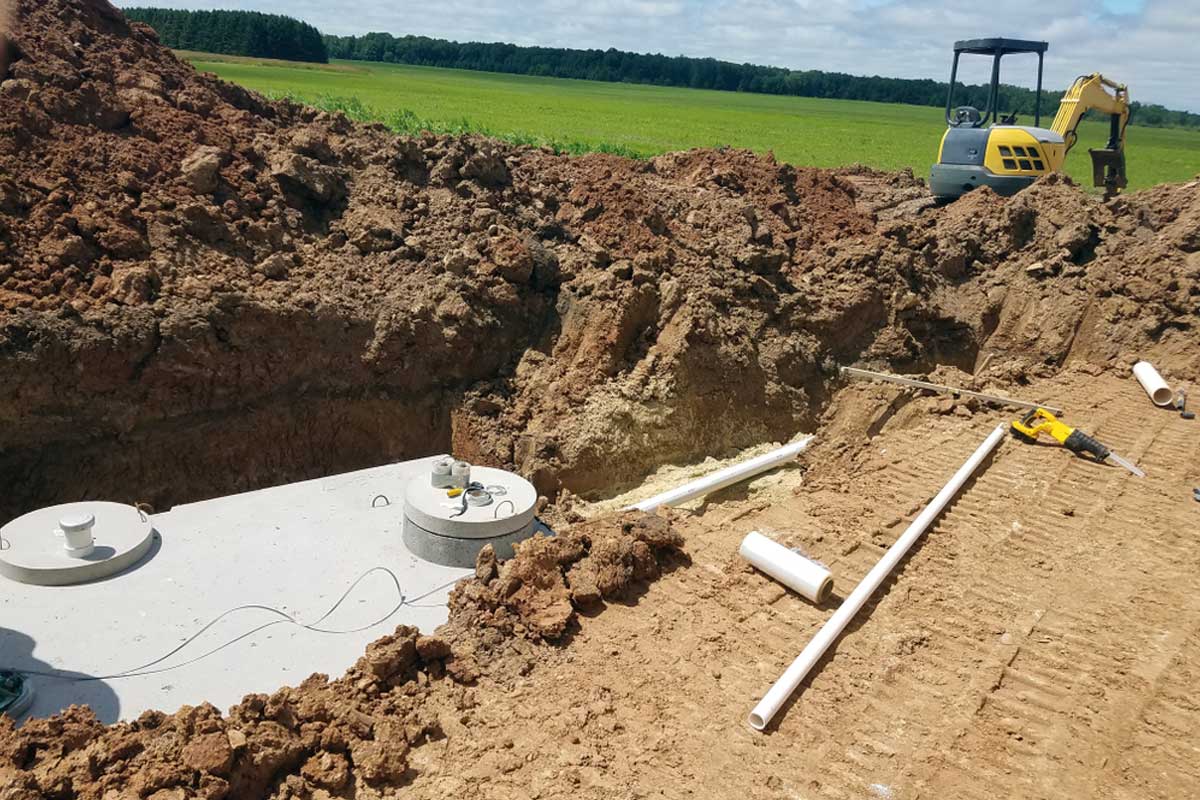Knowing the cost of keeping a system in good condition is essential. If you plan to replace or install a Septic system, knowing the expenses involved can help you prepare your budget and avoid any surprises. There are various factors that contribute to the septic replacement cost.

The cost of installing an septic tank and a leach field may vary in relation to several important aspects. One of the main considerations is the size of the septic system required. The larger properties or households with a higher use of water generally require larger leach fields and septic tanks which will result in a greater total cost. The soil conditions and topography may also impact the cost of installation as well as complexity. If the soil is difficult, it may require more excavation or special techniques. These could increase the cost.
The price of a septic system could also be affected by the choice of leach and septic tanks as well as fields. Different types of materials and designs come with various costs. The traditional concrete tanks tend to be cheaper as compared to alternatives such as fiberglass or plastic tanks. Additionally, advanced treatment systems or alternatives that are environmentally friendly may come at a higher cost however they offer other benefits like better water treatment and conservation.
The initial investment in a septic system and leachfield is important, but it’s also essential to factor in the cost of maintenance and eventual replacement costs. The lifespan of a septic tank ranges between 25 and 30 years based on factors such as usage and maintenance, the materials used, etc. With time the tank could require repair or replacement. In determining the cost of replacing a tank for septic, you need to take into account not just the tank’s price but also the labor involved and any necessary upgrades in order to be compliant with current regulations.
The price of replacing a septic tank will vary based on the dimensions, the type of tank and its complexity. In some instances there may be a need to excavate and remove the old tank prior getting the site ready for installation. In addition, if regulations have changed between the original installation and now there could be additional costs in order to bring the new septic in line with the latest regulations.
Regular maintenance and inspections are vital to ensure smooth replacement, and also to avoid unexpected costs. Regular inspections will enable you to identify any potential problems and then make the necessary repairs to extend the lifespan of your septic tank. Regular pumping of the tank is vital to prevent solids from accumulating and causing damage.
It is recommended to obtain estimates from reputable contractors prior to planning the installation or replacement of the sewer tank. Comparing the estimates will give you a better understanding of average prices in your locality and allow you to make an informed choice. Also, ask about any guarantees offered by the contractor in relation to their work or on the materials employed.
It is important homeowners and property owners to know the costs of a septic tank and the total septic system. When you consider factors like the size, material, soil conditions, and potential long-term expenses it is possible to plan for the replacement or installation of a septic tank and leach field. For your septic to last for as long as it can and to reduce the cost of future repairs the system requires regular maintenance, inspections and care. Make sure you are aware that a functioning septic system is not just important for the management of wastewater, but also adds value to your house.

